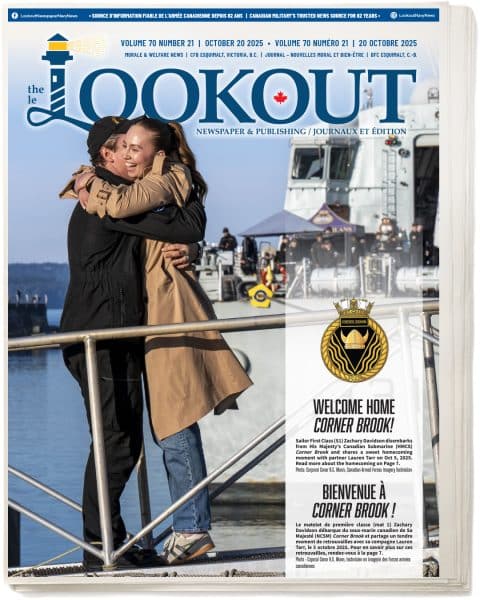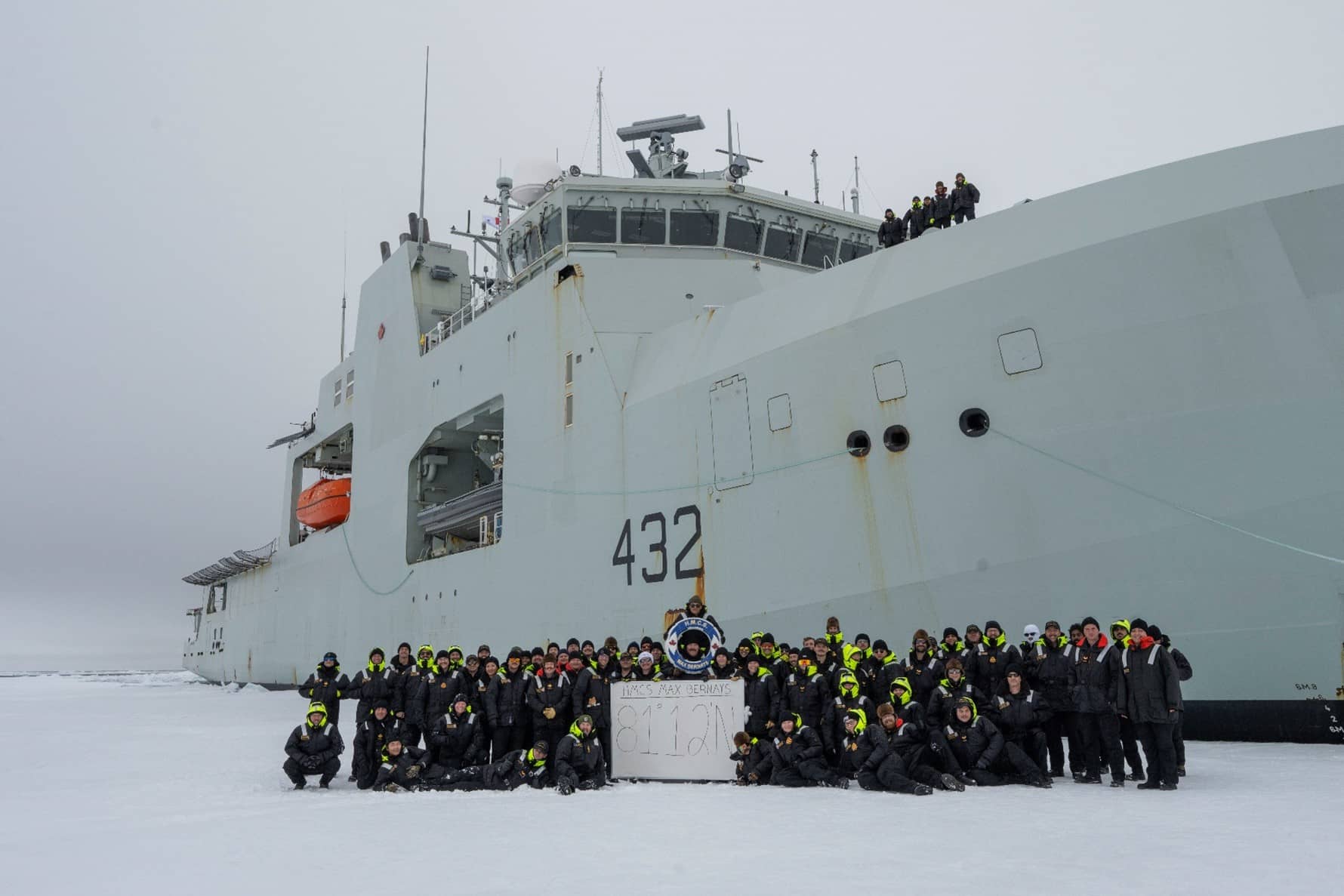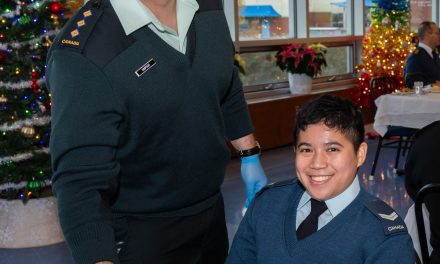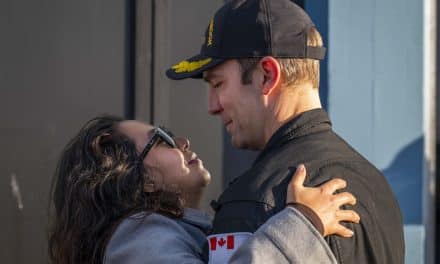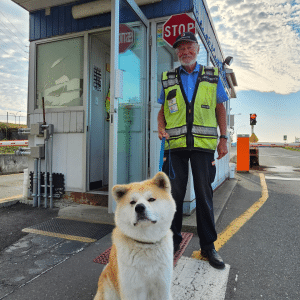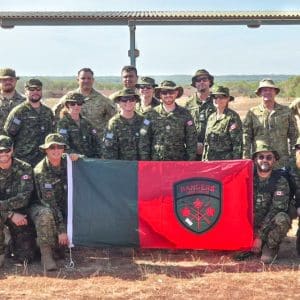Mat1 Maxime Vandal
- On Aug 29, HMCS Max Bernays reached 81°12′ N in the Arctic, the farthest north ever sailed by a Royal Canadian Navy vessel.
- The crew overcame extreme Arctic challenges, from drifting sea ice to system strain, relying on every department to succeed.
- This record strengthens Canada’s Arctic presence, expands naval operational confidence, and supports continental defence priorities.
–
On Aug 29, His Majesty’s Canadian Ship (HMCS) Max Bernays set a new Royal Canadian Navy (RCN) record when the vessel and its crew reached 81°12.044’ N, 155°38.512’ W – farther north than any RCN ship in history.
Currently participating in Operation (Op) LATITUDE in the Western Arctic and its approaches, Max Bernays departed Esquimalt Harbour on Aug 13 for a multi-operational deployment. The vessel is set to return home on Dec 19, following later participation in both Op HORIZON in the Indo-Pacific region and NEON in support of United Nations sanctions enforcement.
For over a decade, HMCS Shawinigan held the record for sailing to the highest northern point with its Aug 14, 2014 touch at 80°28’ N. While other vessels have since operated in the Arctic, none have surpassed that mark — until now.
Reaching 81°12.044’ N required every department pulling in the same direction. As such, bridge teams and lookouts had to adjust to the midnight sun and the visual illusions caused by drifting sea ice. Engineers also worked non-stop to prevent water and heating systems from cracking under the pressure of Arctic conditions, while the deck department kept upper deck equipment prepared for any rescue mission and minding lines that stiffened within minutes. Specialists analyzed imagery and weather, while an embarked Ice Service Specialist from Environment Canada advised on ice composition and movement. The crew encountered and overcame challenges that only revealed themselves at the furthest edges of navigational charts — allowing them to gather important insights and lay vital groundwork for future Arctic patrols to go even further and stay at sea longer.
The impact of this milestone is as farreaching as its accomplishment. The record now expands where and how the RCN can safely work, with a successful 81° degrees North mission increasing planning, logistics, and riskmanagement confidence during an Arctic sail. It also strengthens relationships with Northern and Indigenous partners through repeatable presence, community links, and practical support.
A Harry DeWolf class Arctic and Offshore Patrol Vessel, Max Bernays’s achievement also reinforces the efficiency of the RCN’s modern Arctic toolkit, purpose-built to operate in such harsh environments. Finally, the new record contributes directly to continental defence — the more consistently Canada can see, understand, and operate in the Arctic approaches, the stronger our ability to detect, deter, and defend.
For now, the story is simple: a ship’s company, every department, one team, taking Canada’s Navy farther north than it has ever been, and setting conditions for the next crew to go farther still.
